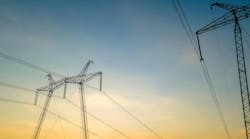Our core mission as a federal business remains to steadfast: deliver cost-based federal hydropower and transmission services. As we stand at the precipice of a new year, there are a troika of challenging issues facing WAPA and the West: weather, markets, and infrastructure investments. More specifically, for WAPA, these issues mean operating through extreme weather impacts and debilitating drought, evolving energy market constructs emerging from all directions, and a historic push on transmission infrastructure investments. For us, some of these matters can get existential quickly. That being the case these matters will no doubt inspire dialogue about WAPA’s role in the face of some known unknowns and maybe a once in a generation opportunity.
Legacy in the Wake of Extreme Weather
Today, an internet search of ‘western US drought’ populates with about 84 million search engine results, confirming what is common knowledge now for most. Drought and extreme weather are impacting water deliveries and hydropower generation. For us, these are impacting every part of our business from rates to supplemental power purchasing to transmission system resiliency.
Several of our projects have experienced severe and enduring drought since 2000. As a snapshot, our Colorado River Storage Project system’s largest reservoir Lake Powell in 2021 only received a fraction of its normal inflow and is about 27 percent of full capacity. This is the lowest level since being filled as a new reservoir. Sadly, forecasts show significant possibilities that Lake Powell will drop to an elevation from which power cannot be generated. Simply put, WAPA can only deliver hydropower that is generated. From an operational standpoint, those existential questions begin to emerge.
Other weather issues have inspired increased planning and operational approaches, including extreme fires and weather events like last year’s polar vortex. Proactive approaches and coordination with generating agencies and customers have born near-term results ranging from enhanced operational plant efficiencies to state-of-the-art vegetation management and easement access permitting. WAPA is ready to engage, particularly as technology solutions are constantly emerging and maturing from our national lab partners. We all need to find the right fit to implement comprehensive and longer-term solutions addressing system resiliency to manage climate impacts.
It is also important to note that amongst the over 700 customers we serve - and the communities in which we all operate and live - represent a huge swath of the West, which is often underserved, economically distressed and rural. The stakes are high.
Markets. Markets! Markets?
A similar search today for ‘western wholesale electricity markets’ comes up with only 15 million search engine results. It appears on any given day or hour of the week, a meeting or new organization is emerging to explore market constructs and scenarios like real time, day ahead, regional transmission organizations. This may not be true, but it feels true. As an active member of the public power universe that is not jurisdictional to state or federal regulatory oversight, these are sometimes tricky conversations. As a business utility, these are crucial conversations.
In 2021, WAPA went live in both the California Energy Imbalance Market and the Southwest Power Pool’s Western Energy Imbalance Service market. And we are in exploratory conversations on other market constructs. The role of maintaining the value that hydropower brings to these market services and organizations is our north star. Like our counterparts, our customers and we also need efficient markets to ensure access to affordable supplemental power and services. Added to our complexity is our geographical diversity and footprint. What might work for some may not work for others, so we have taken a one-size-does-not-fit-all approach. We have also taken the approach of anticipating, preparing and pivoting in the changing world to preserve the value of WAPA and take advantage of opportunities.
Infrastructure Development and Investment Opportunities
Managing WAPA’s expertise and resources is top priority when it comes to system operations, maintenance and already planned construction projects. In addition, long-held relationships and expertise enable us to develop and permit infrastructure partners when needed. This is also part of our core mission.
Having a seemingly ubiquitous presence in the West, private-sector transmission investors and developers are increasingly engaging with us to identify opportunities to interconnect or tap our infrastructure development expertise and resources.
I am a believer in public private partnerships. It is what first brought me to WAPA to run our $3.25 billion infrastructure loan program. There is a way to find beneficial partnerships and leverage expertise to bring infrastructure projects into reality without compromising customer investments. We have done it and are poised to continue this legacy. And we are coordinating with DOE to leverage bipartisan infrastructure bill resources to for projects that support resiliency and renewable energy deliveries.
Through all these challenges and opportunities, we have over 17,000 circuit miles of high voltage transmission through 15 western states that we own, operate and maintain. In short, WAPA knows high voltage transmission. And our inherent role to transmit and deliver clean hydropower, which benefits countless underserved, tribal, rural, and economically distressed communities, is a mission that resonates deeply with everyone at WAPA, from engineers to environmental scientists and from administrative support to linemen. We have great optimism and excitement about the prospects that markets, new technology and infrastructure investment can bring as we start this new era.
Tracey A. LeBeau is administrator and CEO of Western Area Power Administration at the U.S. Department of Energy.


